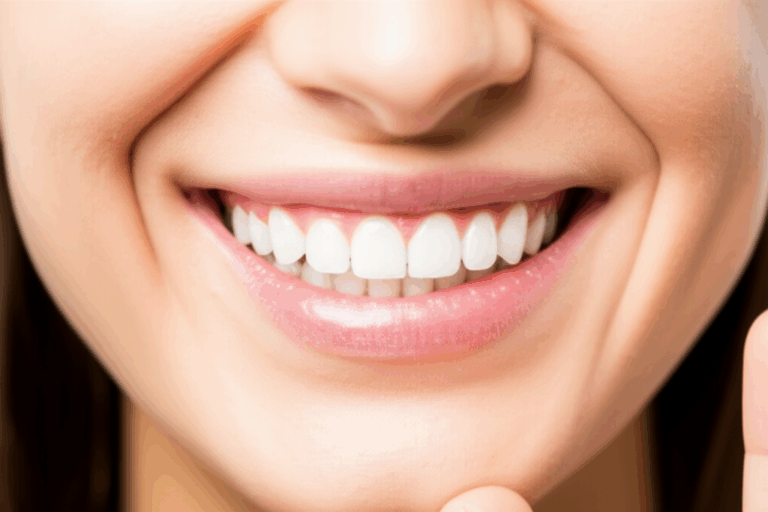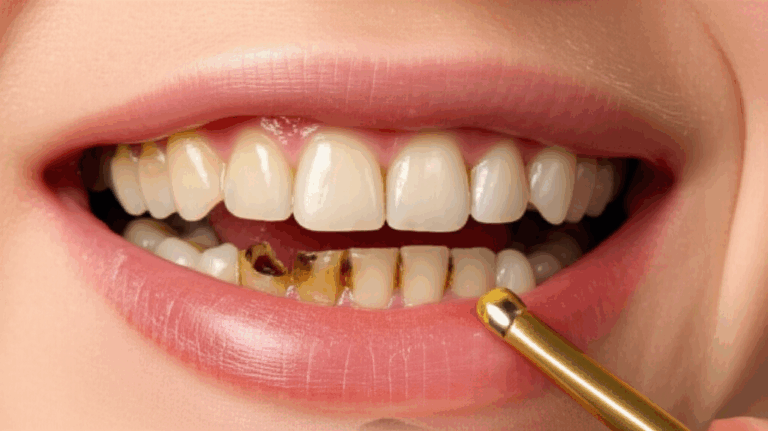
Can All Dental Problems Be Fixed? Lessons and Hope from My Own Dental Journey
Your easy guide to what dentists can do today—and what can’t always be fixed
Introduction: My Hopes, Fears, and Discoveries About Dental Restoration
If you had asked me ten years ago if every dental problem could be fixed, I’d probably just shrug. I used to hate going to the dentist. Every new pain made me worry, “Am I too late? Can the dentist really help me?” I soon found out: yes, most dental problems can be fixed, but not every single one—there are some things you need to know.
As I went through fillings, root canals, gum treatments, and even talked about getting implants, I learned how much dentists can help—and where the limits are. If you have a mouth full of cavities, missing teeth, or just that one ache that won’t go away, I’ll show you what today’s dentists really can do, what’s sometimes “too late,” and why you should usually feel hopeful.
Table of Contents
- What Modern Dentistry Can Fix: A Firsthand Tour of Today’s Solutions
- Limits and Challenges: When “Fixing” Isn’t So Simple
- Why Early Action (and Prevention) Matters Most
- How a Solid Treatment Plan Changed My Outlook
- Conclusion: Finding Real Hope and Next Steps in Dental Care
What Modern Dentistry Can Fix: A Firsthand Tour of Today’s Solutions
After years in the dental chair, I can tell you: today’s dentists have a lot of ways to help. Here’s what I’ve been through and what I’ve learned about the fixes for the most common problems.
Tooth Decay (Cavities): The Sooner, the Better
I’ll never forget my first cavity. I was scared, but the truth is: cavities are super common, and almost always easy to fix if you act quickly.
- Fillings (white or silver): Fast and painless. White (composite) fillings blend in with your teeth; silver (amalgam) ones last a long time but you can see them. I’ve had both kinds.
- Crowns: If the cavity is bigger, the dentist puts a cap over what’s left. I needed one on a weak molar.
- Inlays/Onlays: These fix a tooth that’s worse than a small cavity, but not bad enough for a full crown. They’re less common but helped with some of my teeth.
If you’re nervous, just know: numbing and new tools like lasers really make this easier than you might think.
Gum Disease (Gingivitis & Periodontitis): Don’t Ignore Your Gums
I used to ignore it when my gums bled. Big mistake. After a while, it got worse—periodontitis. Here’s how we fixed it:
- Dental Cleanings: Needed to stop early gum disease. If you catch it now, you can turn it around.
- Deep Cleaning (Scaling and Root Planing): Cleans under the gums. It sounds rough, but the numbing helps.
- Laser Treatment & Gum Surgery: For worse cases, my dentist used a laser (very cool) and talked about tiny surgeries to help me heal faster.
- Bone Grafts: If your bone is already shrinking, bone grafts give you one more chance.
From my experience, gum problems are hard but almost never hopeless if you act soon enough.
Missing Teeth: You Can Still Smile
When I lost a tooth, I thought it was over. But dentists have more answers than ever:
- Dental Implants: My friends love theirs. A metal post goes in your jaw, and a new fake tooth goes on top. It’s not cheap, but it works really well.
- Bridges: When you can’t get an implant, bridges fill gaps. I got one after losing a back tooth.
- Dentures: Forget what you think you know about fake teeth. Today’s dentures, especially ones made in removable denture labs, fit better and look more real than ever.
Losing a tooth doesn’t mean you lose your smile.
Broken or Chipped Teeth: Quick Fixes
One time, I bit down on a popcorn kernel and chipped a front tooth. I panicked, but it was actually an easy fix:
- Bonding: The dentist added a white resin that made my tooth look good again—fast and cheap.
- Crowns: If a crack is deeper or after a root canal, a crown from a crown and bridge lab can save the tooth.
- Veneers: Thin hard covers, mostly for front teeth. My friend got hers at a veneer lab—they look great!
- Root Canals: If there’s pain or infection inside the tooth, a root canal can fix it. Mine wasn’t scary at all.
Crooked or Crowded Teeth: Not Just for Looks
My crowded, crooked smile taught me a lot:
- Braces or Clear Aligners: I had braces as a kid, but lots of adults now use clear aligners (made using digital dental labs). These fixes make biting and chewing better, not just your smile.
- Retainers: They keep your teeth straight after braces.
- Jaw Surgery: Some people need surgery for a bad bite. My cousin did—it helped her eat and breathe better. Surgeries today are much safer than before.
Cosmetic Problems: Makeovers That Work
Some people I met didn’t want to smile for pictures. If you have stains, chips, or gaps, there are good choices:
- Teeth Whitening: Dentists can get your teeth whiter, faster, and keep it that way longer than store kits.
- Veneers and Bonding: These can cover stains, chips, or gaps. You can get that “movie-star” smile.
Dentists can now mix fixing teeth and making them look better, so you can get what you want—even on a budget.
Infections and Abscesses: Act Fast
I once woke up with a sore, swollen jaw. An infection in your mouth is serious. Here’s what happened:
- Antibiotics and Draining: These clear the infection and help the pain right away.
- Root Canals or Pulling the Tooth: Sometimes needed to stop the infection for good—and can even save the tooth.
Trust me: don’t wait if you’re swollen or hurting. The sooner you go, the more they can help.
Limits and Challenges: When “Fixing” Isn’t So Simple
Even with all our new dental tools, sometimes fixing everything just doesn’t work. Here’s what I’ve learned from those hard cases.
Waiting Too Long or Severe Damage: Sometimes, You Can’t Go Back
I’ve seen people come in after decades away from the dentist—I was almost one of them. Here’s what can happen:
- Big Bone Loss: Severe gum disease can eat away your jawbone, making implants nearly impossible unless you add bone.
- Teeth Broken Below the Gums: Sometimes teeth are too far gone. Pulling them is the only choice.
- Long-Lasting Infections: If you wait too long, mouth infections can hurt the rest of your body. After a while, dentists can only help so much.
One day my dentist had to say: “Sorry, this tooth can’t be saved.” That really happens sometimes.
High-Risk Health Problems: Harder to Heal
Some people in my family had illnesses that made dental work risky. If you have bad diabetes, cancer, or trouble with your immune system, healing is slower, and sometimes fixing teeth isn’t possible.
The Cost: It Can’t Be Ignored
Let’s be honest—big dental fixes can cost a lot, especially things like implants or full smile makeovers. Insurance helps, but not always enough. Sometimes it’s not “can it be fixed,” but “can I afford it?” That’s real life.
Taking Care at Home: It’s Up to You
My dentists always told me: none of their hard work means much if you don’t brush, clean, and come back to check-ups. Fixed teeth need care, just like your first set.
Things You Can’t Undo
Some things can’t be truly fixed:
- Cancer Treatments in the Mouth: They can save your life, but sometimes things won’t look or work like before.
- Severe Nerve Injuries: Dentists might stop pain, but not always bring back full feeling or every function.
If this is you, know there are still ways to make things better—even if “perfect” isn’t possible.
Why Early Action (and Prevention) Matters Most
Here’s my honest confession: every tooth problem I ever had would have been easier (and cheaper!) to fix if I found it earlier. Waiting is always worse, more painful, and costs more.
Good Habits Make All the Difference
- Brushing and Flossing: Yeah, it’s basic, but it works. I added mouthwash, and bleeding stopped and breath got better.
- See Your Dentist Regularly: Twice a year, no exception. That’s how we caught things before they became emergencies.
- Eat Healthy: Less sugar and acid really means fewer cavities. My teeth and gums got healthier.
- Beat Dental Fear: If you’re nervous, just tell your dentist. I did, and it helped. Some have calming medicine or are just really good listeners.
Reading teeth health articles taught me: steady care beats any big fix.
How a Solid Treatment Plan Changed My Outlook
The one thing that turned things around for me—was having a good, step-by-step plan. My dentist didn’t just look at my sore tooth. We talked about everything:
- Full Exam: X-rays, gum checks, and bite tests, not just “does it hurt?”
- Specialists Helped: When it got tough, I saw a gum expert and another dentist for missing teeth. A team matters.
- Fixing Things in Steps: We did whatever hurt most first, then worked on deeper problems, then finished with making my teeth look nice.
- Thinking Long-Term: Fixing your mouth isn’t one and done. You need to keep coming back for care and sometimes fix things again.
A plan changed things from chaos to small, doable pieces—and that gave me hope.
Conclusion: Finding Real Hope and Next Steps in Dental Care
So, can all dental problems be fixed? In my own life, almost every mouth problem can be fixed, repaired, or at least made way, way better. Whether it’s filling empty spots, getting your gums healthy, or un-chipping a tooth, today’s dental teams have a solution for most things. The trick is: start early, learn what you need, and do your part at home.
If you’re worried, know this—I was you once. I thought it was too late. With the right dentist, a plan, and some courage, I stopped hiding my mouth.
Ask for a full checkup. Get a second opinion if you want. And remember—every little thing you do now makes a big difference later.
If you want to read more about dental care, prevention, or fancy lab work like at a china dental lab, know that there are people and science ready to help you get your best smile.
Bottom line? Mouth problems don’t define you. With smart choices and good help, almost anything can be fixed—or at least made much better.








